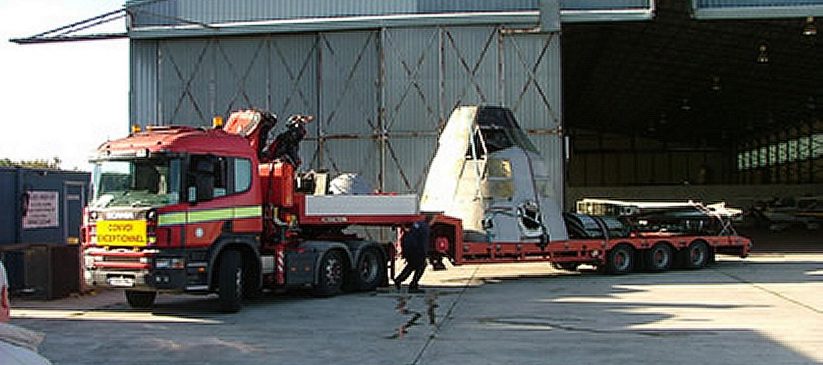
In 2007, several airframes came under threat at North Weald Aerodrome in Essex.
Wings Museum stepped into the breach to mount a rescue operation to salvage several C-47 “chunks” including a C-47 fuselage and also a Fairchild C-119 cockpit section.
During late September the C-119 cockpit section was threatened by ongoing pressure from the local council to ‘tidy up’ the outside aprons around the hangers at North Weald Aerodrome. The effort and cost involved in moving these relics was certainly not for the faint hearted, but members of the Wings Museum stepped into the breach once again. The rescue of these otherwise overlooked relics stands as a testimony to the Museum’s dedication and love of old aircraft.
If only the same attitude was adopted during the post-war years, many more airframes would have survived for future generations to enjoy.
This particular C-119 or ‘Flying Boxcar’ served with the US Air Force as 51-2700 and went to the Belgian Air Force as CP-9.
It entered the UK’s civil register as G-BLSW (after being modified from C-119F to C-119G) and was later re-registered as N2700.

Time is running out for C-119 Cockpit Section at North Weald 2007 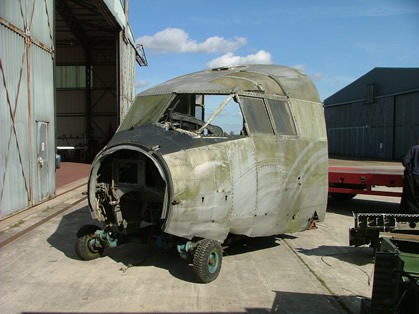
C-119 is prepared for loading 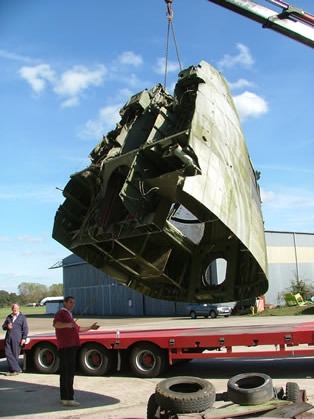
C-119 Nose Section is lifted onto the transporter 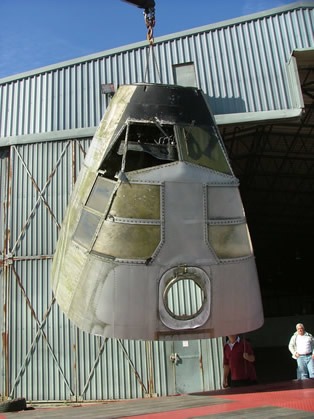
The C-119 Nose is gently lowered onto the flat bed 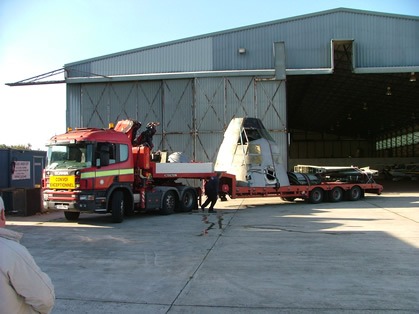
The C-119 Nose is ready for the journey to the Wings Museum
Background information on Fairchild C-119 ‘Packet’
- Type Military transport aircraft
- Manufacturer Fairchild
- Maiden flight November 1947
- Introduced December 1949
- Retired 1974
- Produced 1949-1955
- Number built 1,183
- Developed from C-82 Packet
- Variants XC-120 Packplane
Operational History Of The Fairchild C-119
The aircraft saw extensive action during the Korean War as a troop and equipment transport.
In July 1950, four C-119s were sent to FEAF for service tests. Two months later, the C-119 deployed with the 314th Troop Carrier Group and served in Korea throughout the war.
The USAF Strategic Air Command had C-119 Flying Boxcars in service from 1955 – 1973.
The C-119s saw service with the 456th Troop Carrier Wing which was attached to the Strategic Air Command from 25 April 1955 to 26 May 1956.
The C-119s performed aerial recovery of high altitude balloon-borne instrument packages.
C-119s also performed several aerial recoveries of film-return capsules during the early years of the Corona spy satellite program.
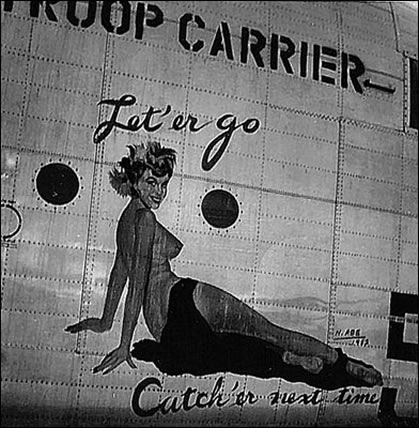
The C-119 would see extensive service in Vietnam, beginning in 1954 with aircraft secretly loaned by the CIA to French forces for troop support. These aircraft were generally flown in French markings by American CIA pilots often accompanied by French officers and support staff. The C-119 was to play a major role during the siege at Dien Bien Phu, where they flew into increasingly heavy fire while dropping supplies to the besieged French forces.
After its retirement from active duty, many C-119s and R4Qs soldiered on in the US Navy, Air Force Reserve and Air National Guard until the mid-1970s, and until recently they were still in use by the Taiwanese Air Force.
The last military use of the C-119 by the United States ended in 1974 when a single squadron of Navy R4Qs based at Selfridge ANG Base near Detroit, Michigan, and two squadrons based at Naval Air Station Long Beach, California replaced their R4Qs with newer aircraft.

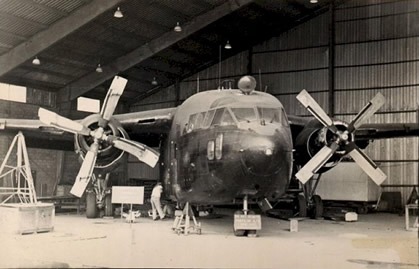
Many C-119s were provided to other nations as part of the Military Assistance Program, including Belgium, Brazil, Ethiopia, India, Italy, Nationalist China, and as previously mentioned, South Vietnam. The type was also used by the Royal Canadian Air Force, and by the United States Navy and United States Marine Corps under the designation R4Q.
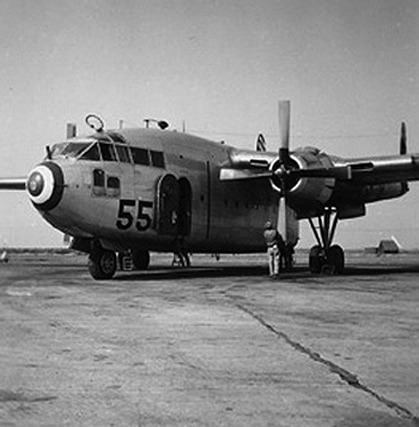

Also rescued from North Weald was the DC-3 / C-47 “Dakota”